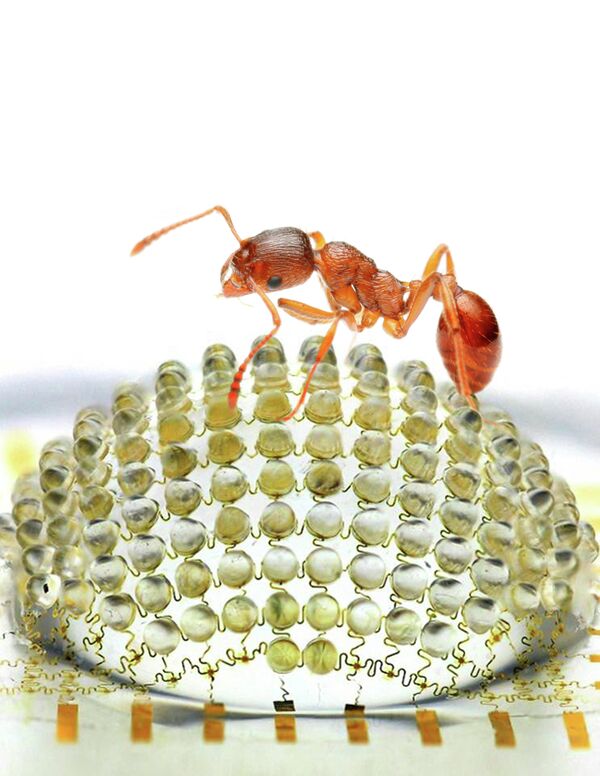WASHINGTON, May 1 (RIA Novosti) – An international team of scientists has developed a digital camera that gives a pin-sharp, exceedingly wide-angle bug’s-eye view of the world.
John Rogers of the University of Illinois at Urbana-Champaign, a lead researcher on the project, said that the large arrays of microlenses on the camera’s hemispherical lens, gives the new device “unmatched field of view and other powerful capabilities in imaging.”
“The compound eyes of arthropods” – the scientific word for bugs – “are particularly notable for their exceptionally wide fields of view, high sensitivity to motion and infinite depth of field,” says a report, in the journal Nature on the new camera, which is expected to be used in surveillance devices, endoscopy tools and other complex applications.
To replicate the exceptional view that insects have of the world, the camera uses 180 tiny lenses, “comparable in number to those of the eyes of fire ants and bark beetles,” each with the ability to focus separately, and couples them with miniature detectors set on a lens sheet made from a material similar to that used in contact lenses.
Using pneumatic pressure, the lens sheet is transformed into a hemispheric shape, much like a ball that has been cut through the middle.
The resulting curved lens structure resembles an insect’s eye. With its many lenses and detectors, the lens is able to capture pin-sharp images with a wide field of view, the researchers say in Nature.
The new camera was developed with funding from the US government agency that helped to develop the Internet, the Defense Advanced Research Projects Agency (DARPA); and the National Science Foundation.


